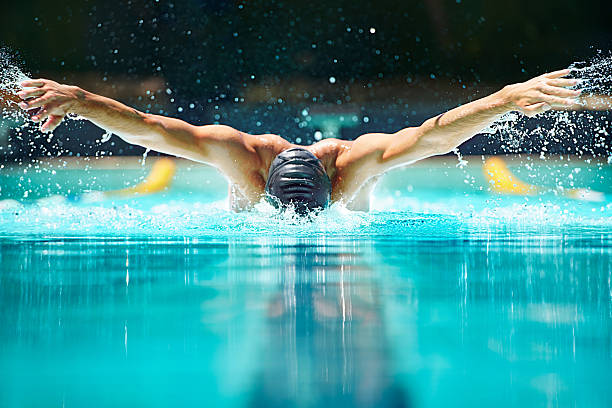Surging Through Water: The Intricacies of Butterfly Stroke in Swimming
Swimming is an art whose beauty lies in the precise execution of its strokes. Among these, the butterfly stroke stands out as an emblem of grace, strength, and endurance. This rhythmic and powerful style is a sight to behold when performed by a skilled swimmer. However, beneath its aesthetics lie intricate techniques, formidable challenges and a rich history. This article will delve into the butterfly stroke, exploring its origins, the science behind its effectiveness, and its role in competitive swimming.

In the early 1900s, swimming styles were less about finesse and more about brute strength. Swimmers predominantly used the breaststroke, which was relatively slow and energy-consuming. However, a transformation was on the horizon. In 1933, a swimmer named Henry Myers introduced a new style in a competition—an undulating, dolphin-like stroke. His unique method, which later became known as the butterfly stroke, was initially met with skepticism but eventually recognized for its speed and efficiency.
The butterfly stroke has evolved significantly since Myers’ first demonstration. The contemporary style involves a simultaneous overhead stroke of the arms and an undulating dolphin kick. This combination, along with proper timing, allows the swimmer to maintain momentum and glide through the water effortlessly. Though the stroke is physically demanding, its benefits in terms of speed and strength conditioning are unmatched in the swimming world.
But mastering the butterfly stroke is a challenge even for seasoned swimmers. It requires strength, endurance, and impeccable timing. The stroke’s physical demands often discourage beginners. However, with proper training and perseverance, the butterfly can be an extremely rewarding style to master. It offers a full-body workout, emphasizing the upper body and core strength.
The butterfly stroke’s utility goes beyond personal fitness goals. In competitive swimming, it has become a crucial component. Athletes who master this stroke often excel in competitions, as it is one of the fastest styles in swimming. The 100m and 200m butterfly events are among the most anticipated races in championships, showcasing the swimmers’ strength, endurance, and technique.
The butterfly stroke, with its combination of power, grace, and rhythm, continues to fascinate both swimmers and spectators. Its rich history, technical intricacies, and competitive significance make it an integral part of swimming. While the stroke presents a formidable challenge, it is an example of how hard work, perseverance, and proper technique can lead to remarkable athletic achievements. The butterfly stroke encapsulates the essence of swimming—strength, elegance, and constant evolution.
Swimming, in its entirety, is a sport of elegance and endurance. The butterfly stroke adds a layer of strength and dexterity, making it one of the most challenging and rewarding aspects of this discipline. As we continue to understand and appreciate this intricate technique, we also acknowledge the swimmers who tirelessly train to master this stroke, furthering the boundaries of what is possible in the realm of swimming.





